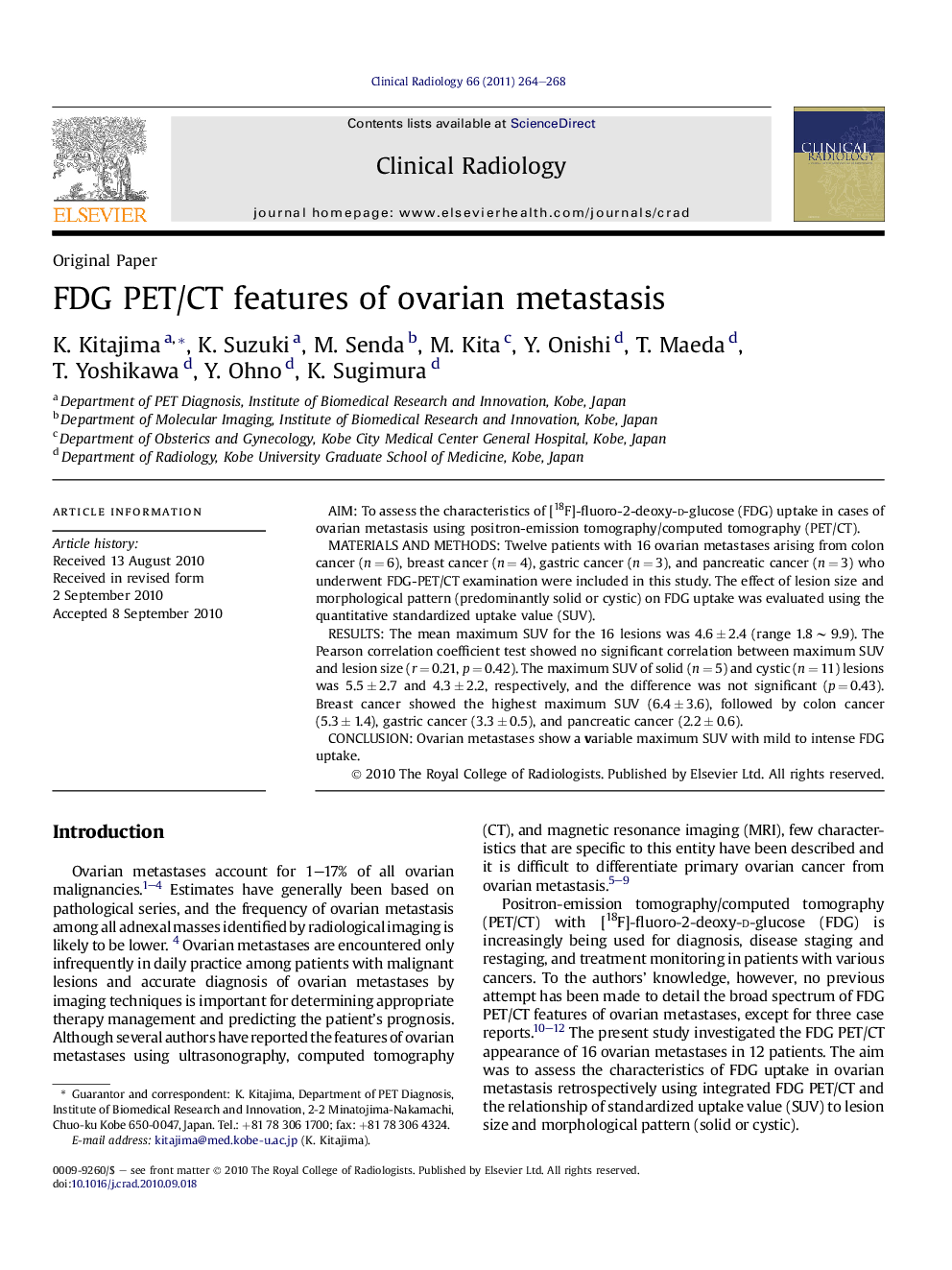| Article ID | Journal | Published Year | Pages | File Type |
|---|---|---|---|---|
| 6191062 | Clinical Radiology | 2011 | 5 Pages |
AimTo assess the characteristics of [18F]-fluoro-2-deoxy-d-glucose (FDG) uptake in cases of ovarian metastasis using positron-emission tomography/computed tomography (PET/CT).Materials and methodsTwelve patients with 16 ovarian metastases arising from colon cancer (n = 6), breast cancer (n = 4), gastric cancer (n = 3), and pancreatic cancer (n = 3) who underwent FDG-PET/CT examination were included in this study. The effect of lesion size and morphological pattern (predominantly solid or cystic) on FDG uptake was evaluated using the quantitative standardized uptake value (SUV).ResultsThe mean maximum SUV for the 16 lesions was 4.6 ± 2.4 (range 1.8 â¼Â 9.9). The Pearson correlation coefficient test showed no significant correlation between maximum SUV and lesion size (r = 0.21, p = 0.42). The maximum SUV of solid (n = 5) and cystic (n = 11) lesions was 5.5 ± 2.7 and 4.3 ± 2.2, respectively, and the difference was not significant (p = 0.43). Breast cancer showed the highest maximum SUV (6.4 ± 3.6), followed by colon cancer (5.3 ± 1.4), gastric cancer (3.3 ± 0.5), and pancreatic cancer (2.2 ± 0.6).ConclusionOvarian metastases show a variable maximum SUV with mild to intense FDG uptake.
